Background Check: Fisher & Paykel vs. Wolf
There are kitchen ranges, and then there are kitchen ranges. When my husband and I bought our apartment last year, I was chuffed that the Fisher & Paykel appliances came with. I’ve become really smug about my new toys. Induction hubs still aren’t that common in the U.S., and everyone who comes over wants to tinker with all the features. We have a fridge and dishwasher from F&P too, and one of the best parts about these appliances is that they’re hidden within my continuous, minimalist kitchen.
The New Zealand luxury appliance brand is known for its chic, restrained product design. I wondered if the company is able to convey the same sense of sophistication in its employer brand, so I went to the careers page. Not bad at all. How does it compare to the competition?
Well, let’s do it: we’re putting Fisher & Paykel’s career page against that of its American competitor Sub-Zero.
Both make luxury kitchen appliances, both are famous for their ranges (Sub-Zero’s famous ranges are the “Wolf” line), both are known for their statement-making designs. I’ll do my best to not play favorites.
Fisher & Paykel
Already, F&P is off to a great start. Above the fold on its careers page is a logo, photo, belief statement, and call to action.
F&P’s career site is relatively flat. The main page can be toggled between three sections: careers, what we do, and meet our team. Much of the content is stored in drop-downs, so there isn’t a lot of space for visitors to wander. It’s image heavy, text light. Appropriate, considering the company’s product design.
Careers is the main hub and includes a video (more product-focused than employee-focused, though) and statements of belief, and it serves as a jumping-off place for the other sections.
What we do is about the different teams that Fisher & Paykel comprises plus info about its early career program.
Meet our team includes short profiles of F&P employees.
The page also features information about DEI and sustainability work. Though the information is light, I consider it effective. Rather than a vague statement about valuing DEI, F&P lists specific steps taken, including:
Established a global employee-led Gender Inclusion and Cultural Diversity network, as well as a Māori and Pasifika network in New Zealand
Updated key policies and practices, like flexible working, to enable greater participation
Introduced Te Reo Māori courses in collaboration with Ngāti Whātua Ōrākei
Sponsored Women in Engineering groups with Auckland and Christchurch universities
And, fitting with its luxury branding on the consumer side, the career page features chic shots of the F&P offices reminiscent of architecture photos, featuring the characteristic “blurry man.”
Sub-Zero
You just can’t get away from it: Sub-Zero’s career page is very text heavy. This is what greets visitors above the fold.
Below that, the assault continues with large, unbroken word blocks. It’s hard to know what’s important on this page, and it’s unclear where the company wants to guide me—there is too much information and too many avenues to travel.
On its testimonials page, there are a handful of reviews with employee headshots (good!), but we encounter the same problem here: information overload and walls of text. Here’s one employee testimonial, which takes up the entire screen (on desktop, no less).
Another problem with this careers page is that, despite the employee testimonials and abundance of information about the company, it feels very impersonal.
The stock images are anonymous, the belief statements unremarkable (We seek to treat each other and our customers with the greatest respect and integrity—always.), and the language lifeless.
This page banner is enough to make you shudder. I mean, did they accidentally use the meta description for the H1? You can’t expect visitors to scroll through a library of videos, the design of the site should introduce these videos to the prospective applicant in context.
I told you I would be as unbiased as possible, so let’s look for the good bits.
Remember that second block of unbroken text on the main landing page? The content there is really important. It’s an invitation to an in-person interview day. Right away, I’m given the opportunity to connect with the company face to face. For one brief, shining moment, Sub-Zero becomes personal.
And the winner is . . .
Fisher & Paykel.
F&P’s site may border on info lite (it’s hard to find information about company benefits, for instance), but it certainly wins the design contest, which is an invaluable part of the way these brands represent themselves. Fisher & Paykel’s site organizes relevant information into scannable bits. Plus, it does a better job of reflecting the company’s consumer-facing brand than Sub-Zero’s page does.
Sub-Zero’s page is just overloaded. There’s too much text, too many pages, too much compartmentalization. Though there is an abundance of information, it is simply too overwhelming to be effective. And though there are plenty of routes visitors might pursue, the number of options encourages no exploration at all.
Emily McCrary-Ruiz-Esparza is a freelance reporter based in Richmond, VA, who covers the future of work and women’s experience in the workplace. Her work has appeared in the Washington Post, Fast Company, Quartz at Work, and Digiday’s Worklife.news, among others.
ABOUT UNCUBED STUDIOS
Launched in 2016, Uncubed Studios is a full-service creative agency with a client list representing the most influential employers on earth along with the high growth tech companies.
The team that brings the work of Uncubed Studios to life is made up of award-winning experts in cinematography, journalism, production, recruitment, employee engagement, employer branding and more.
Interested in speaking with Uncubed Studios? Email us at studios@uncubed.com









